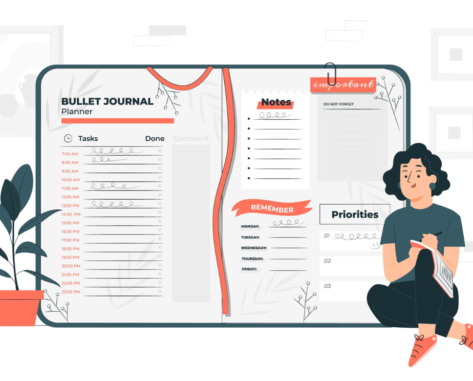LESSON OVERVIEW
The main objectives of this lesson are to:
- learn and practise vocabulary related to productivity and priorities;
- watch and discuss an explainer video on prioritizing tasks;
- give advice on task management.
This lesson focuses on talking about priorities. Students analyse blog post titles and practise vocabulary (e.g. require your attention, achieve long-term goals, set a clear deadline, etc.). They also watch and discuss an explainer video about the Eisenhower Matrix, talk about time management, and give advice on how to organize tasks.
VOCABULARY
This lesson starts with a warm-up in which students examine blog post titles about procrastination, productivity and prioritization. They discuss and explain which one they would like to read. After that, students match halves to create sentences about prioritizing tasks effectively. Then, they analyse and decide which blog post from the previous activity each sentence might be from. Afterwards, students focus on talking about priorities, practise vocabulary (e.g. achieve, have a big impact, immediate consequence, etc.) and choose the correct option to complete statements about the meaning of phrases from the prior tasks.
VIDEO AND DISCUSSION
In this part of the lesson, students prepare to watch a short video about prioritizing different tasks. Before watching it, they explain the difference between ‘urgent tasks’ and ‘important tasks’. Then, students watch the first part of the video and check their answers. Afterwards, they complete and add details to statements about how to be more productive. Following that, students watch the second part of the video and complete the Eisenhower Matrix with the missing information. Next, they watch the final part of the video and choose the correct summary.
GIVING ADVICE
In the last part of this lesson, students engage in talking about priorities and time management. Then, they complete the gaps with one word each to create statements about approaches to task management. Students also discuss whether they do or would like to do anything similar. After that, they choose four problems from a list and give advice. In each piece of advice, students use one phrase from the target vocabulary. Finally, they read a situation and elaborate on the things a person could do to improve her life in some areas (e.g. work, health, hobbies, etc.). Students organize their list of tasks according to the Eisenhower Matrix and, in pairs, find the differences and discuss whose ideas are better.
HOMEWORK/REVISION
This lesson also includes an additional task that you can use as homework or revision. In the task, students put the words into the correct order to complete dialogues and add one more line to each dialogue. The task is available in the teacher’s version of the worksheet. You can print it and hand it out to your students. It’s also included in the e-lesson plan.
Subscribe to unlock these and many other Standalone lesson with the Premium planWORKSHEETS














This lesson is fantastic! Tonight’s intermediate group was very engaged and spent 2 hours of productive and quite fluid conversation focusing on the second and third page of the lesson. Exercises 3 through 9 went particularly well.
Thanks! We’re really happy you liked the lesson 🙂
Decent lesson plan, however the theme of blog posts is not something all ESL students can relate to. The topic is good, but the theme it is built around misses the mark with a broad audience. Only a slim and niche demographic of people still read and use blogs.
Thanks for your comment! While blog posts are mentioned in the first two activities, they’re not the main focus of the lesson. So, it should work well for most people.
Very interesting topic and the lesson plan is well thought. Thank you!
Thanks so much! Glad you liked it 😊